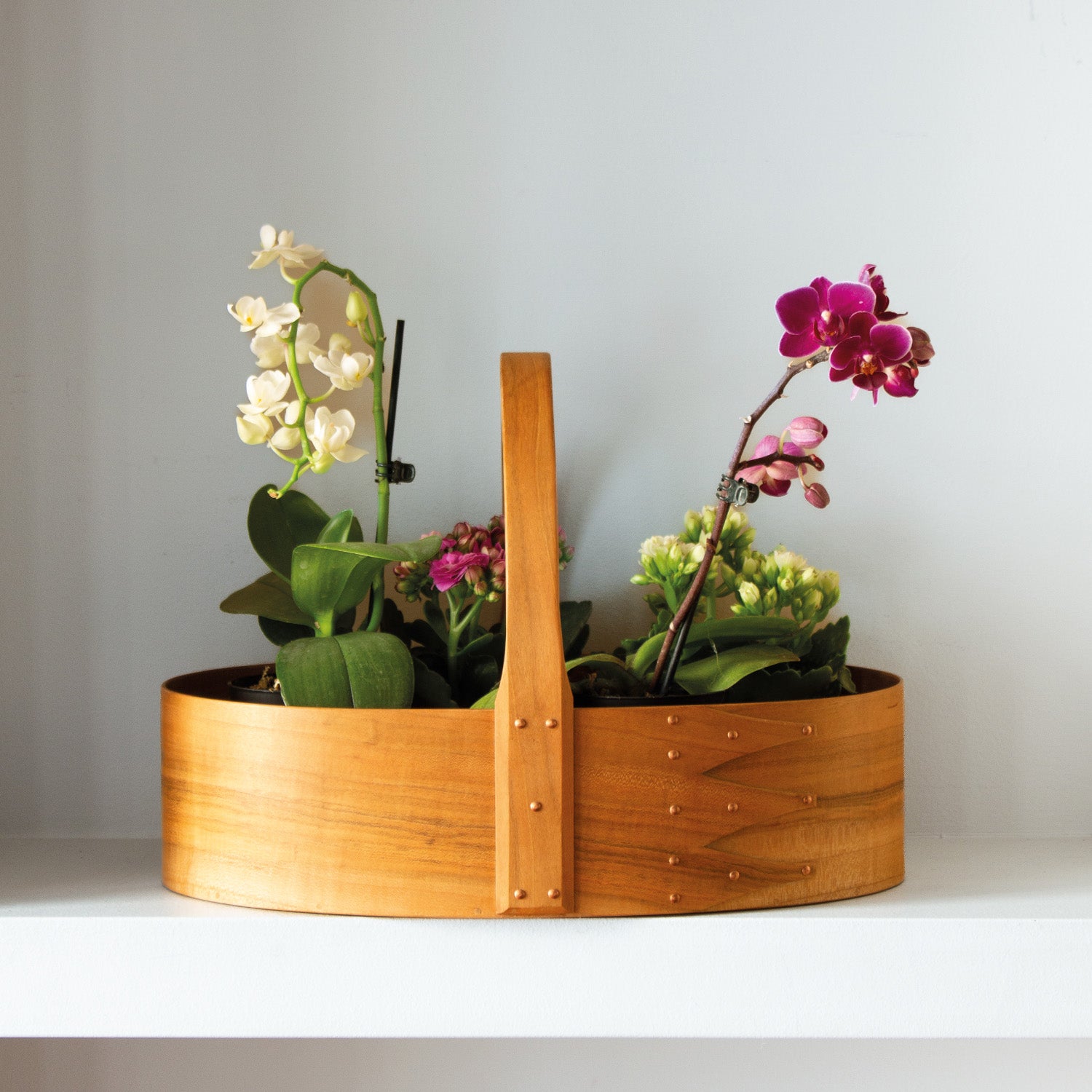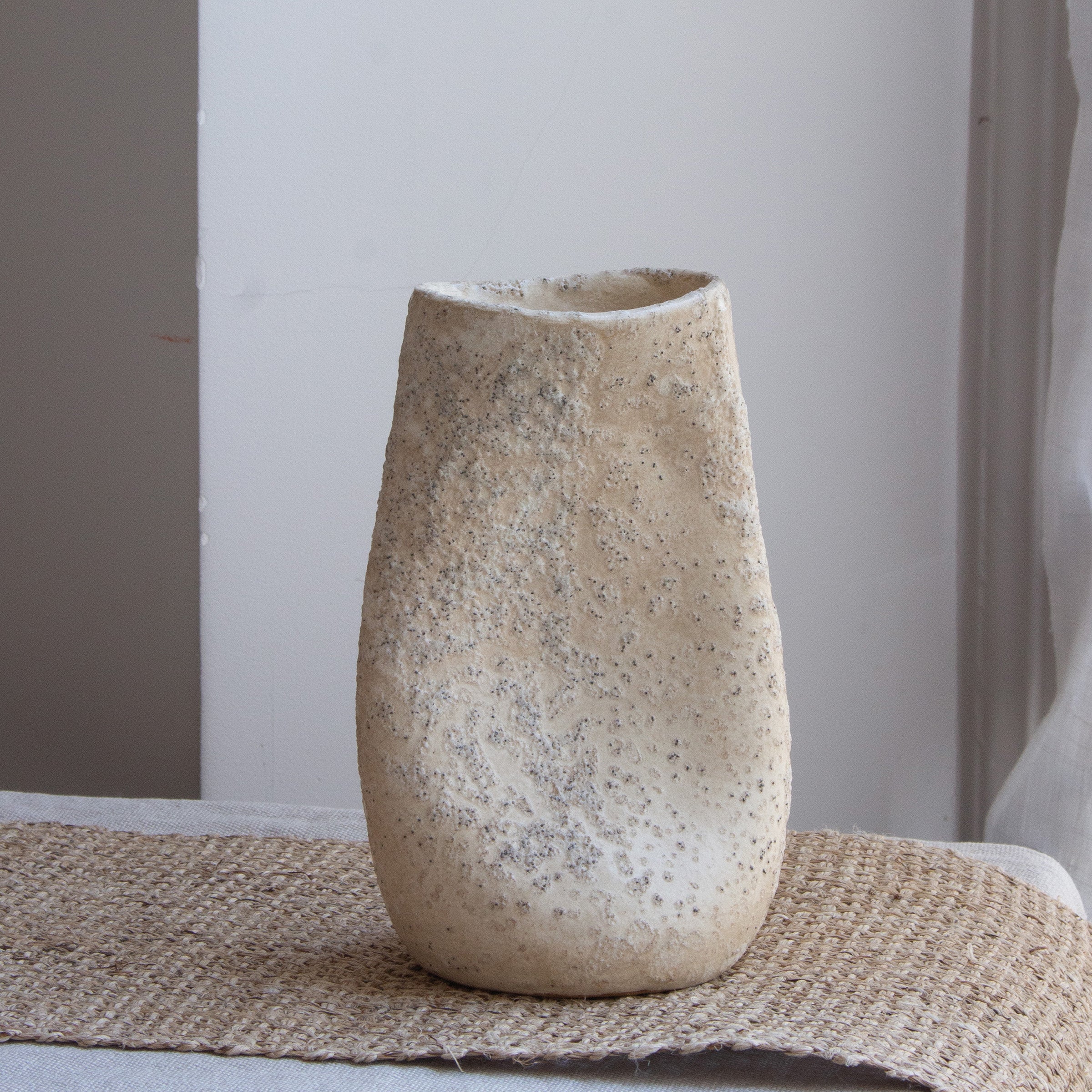


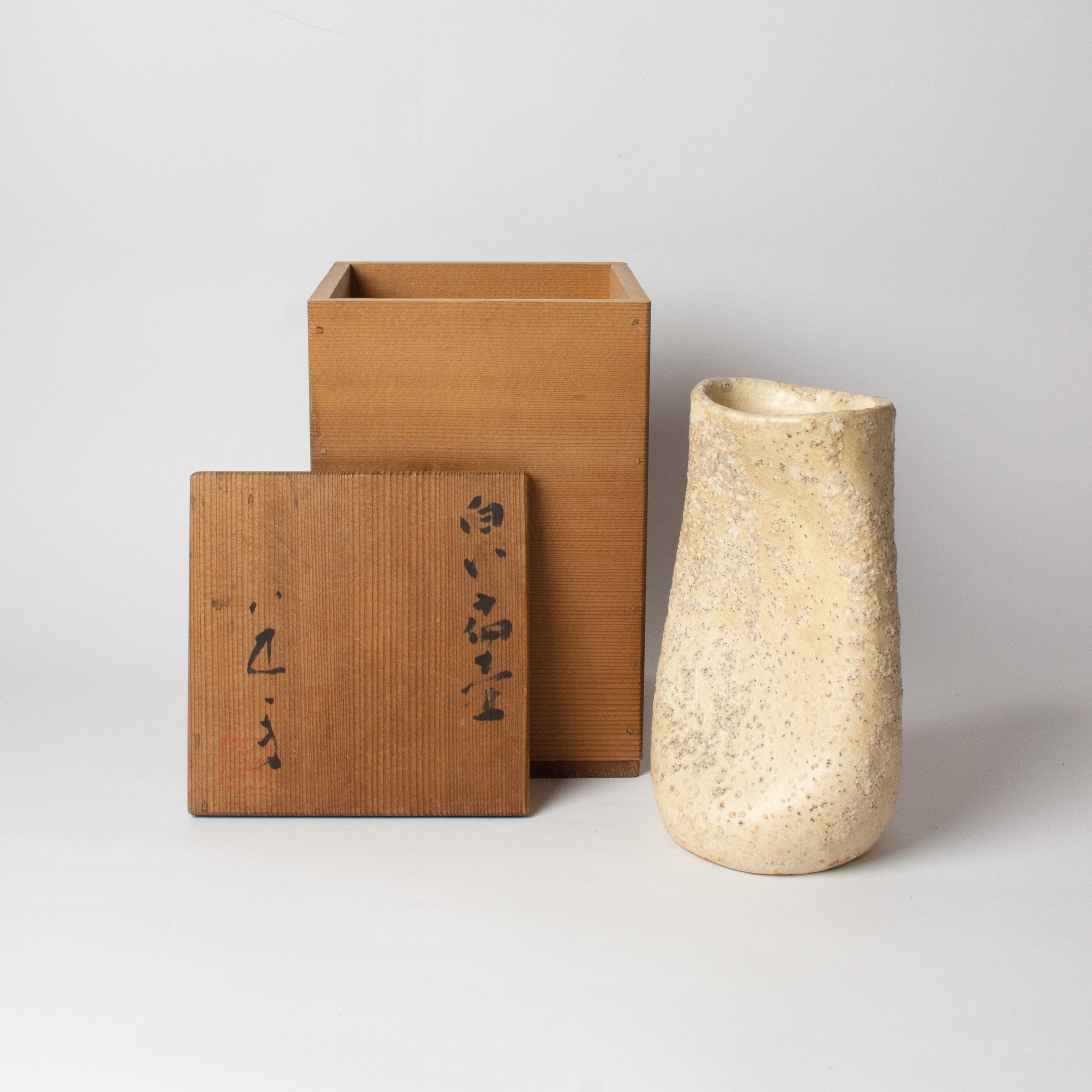


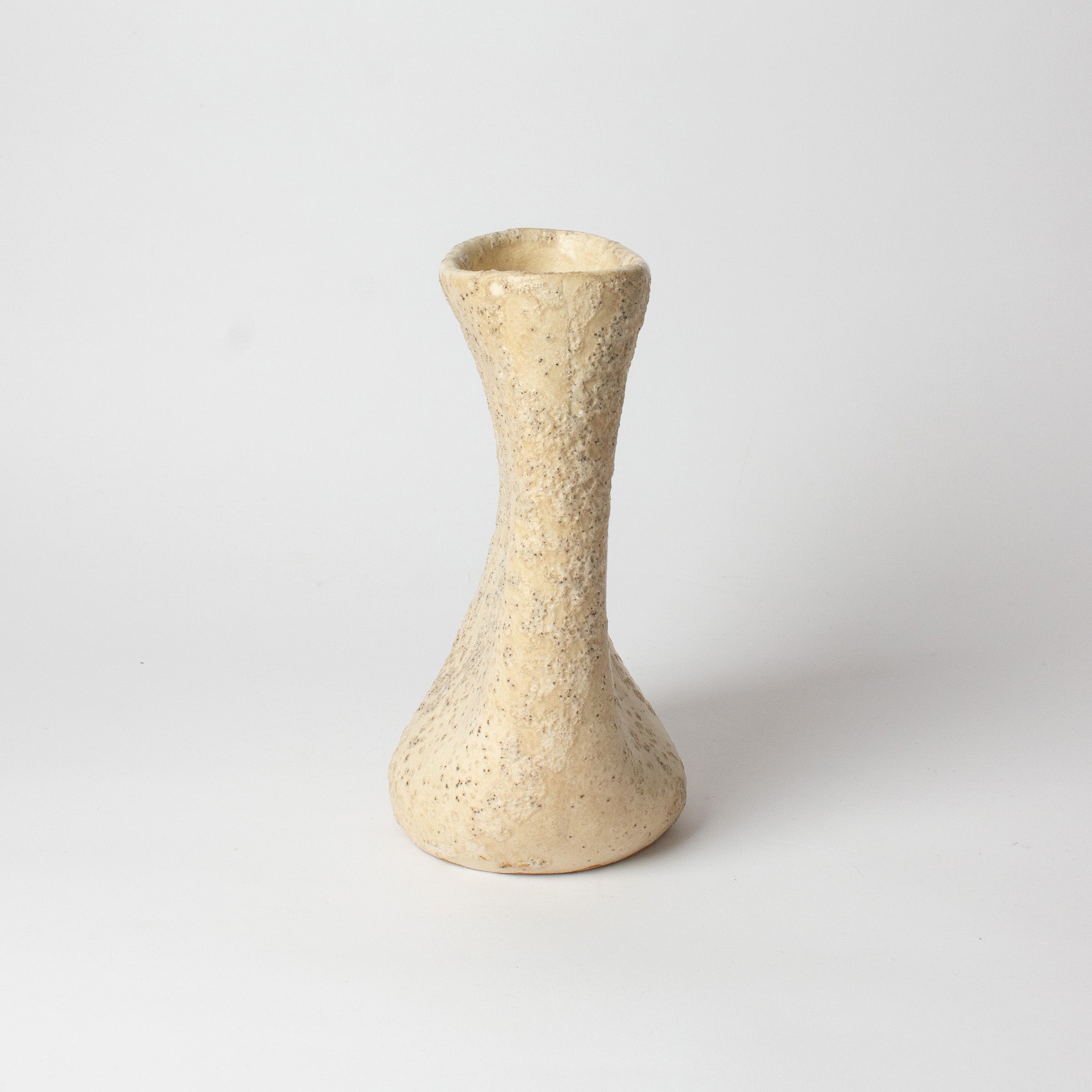
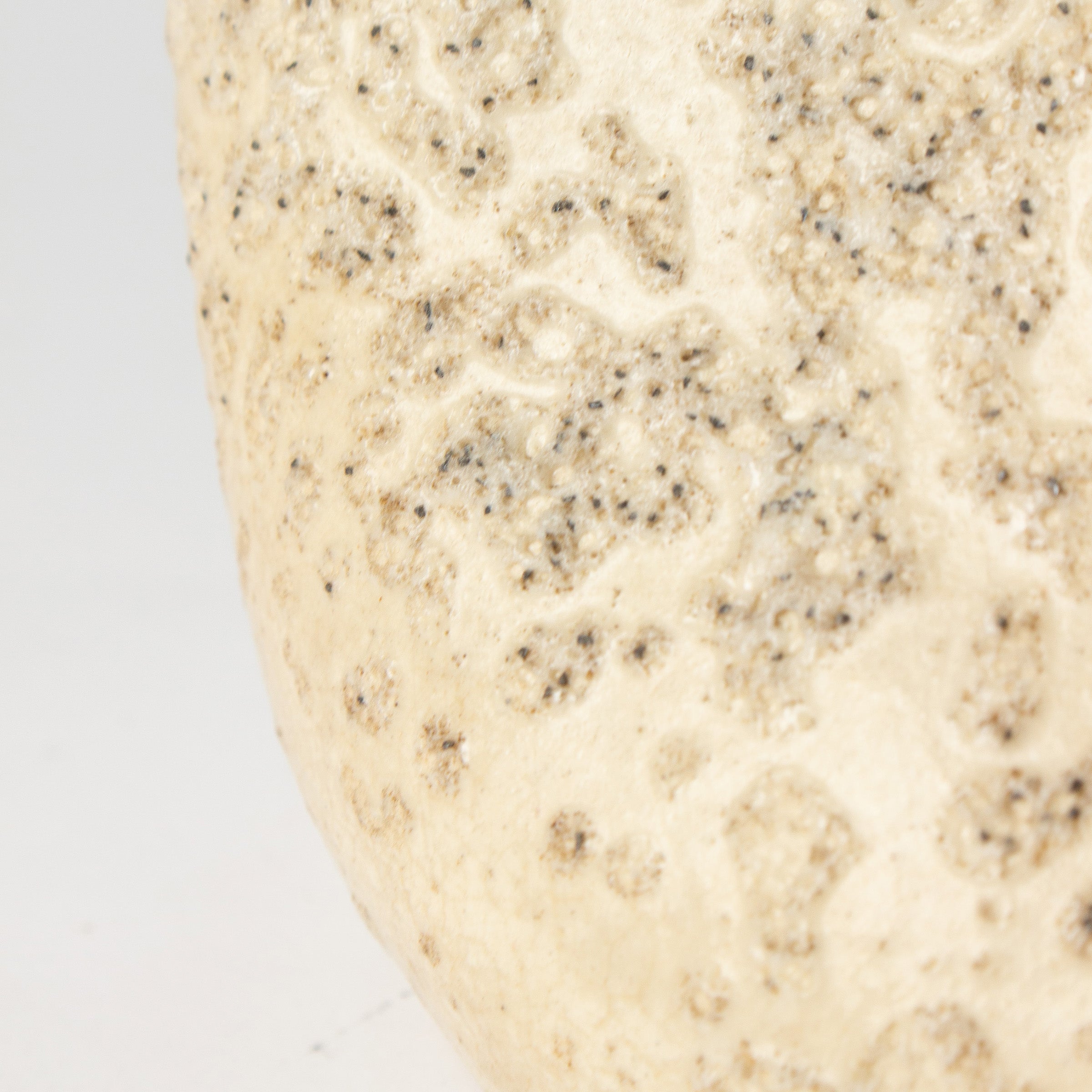

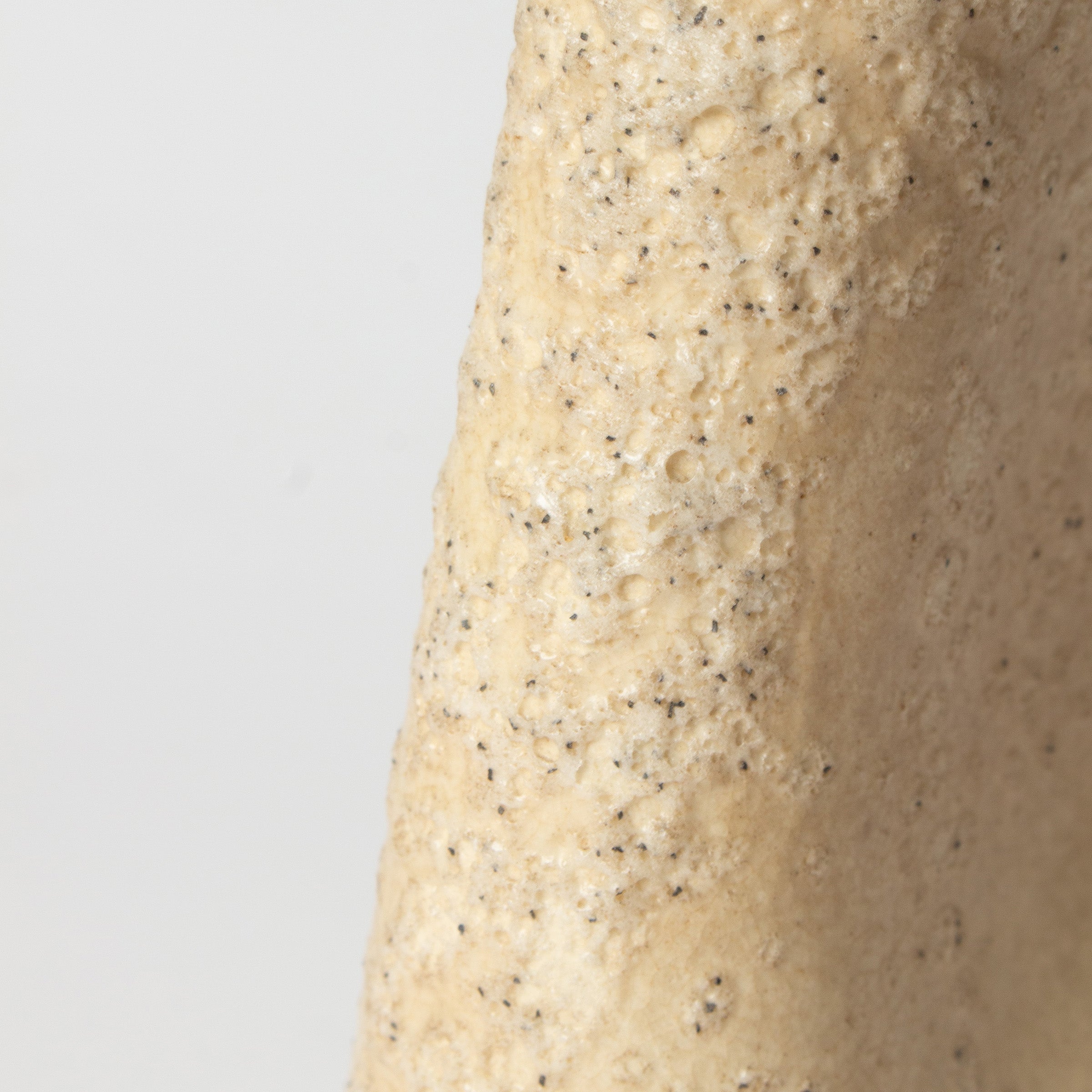

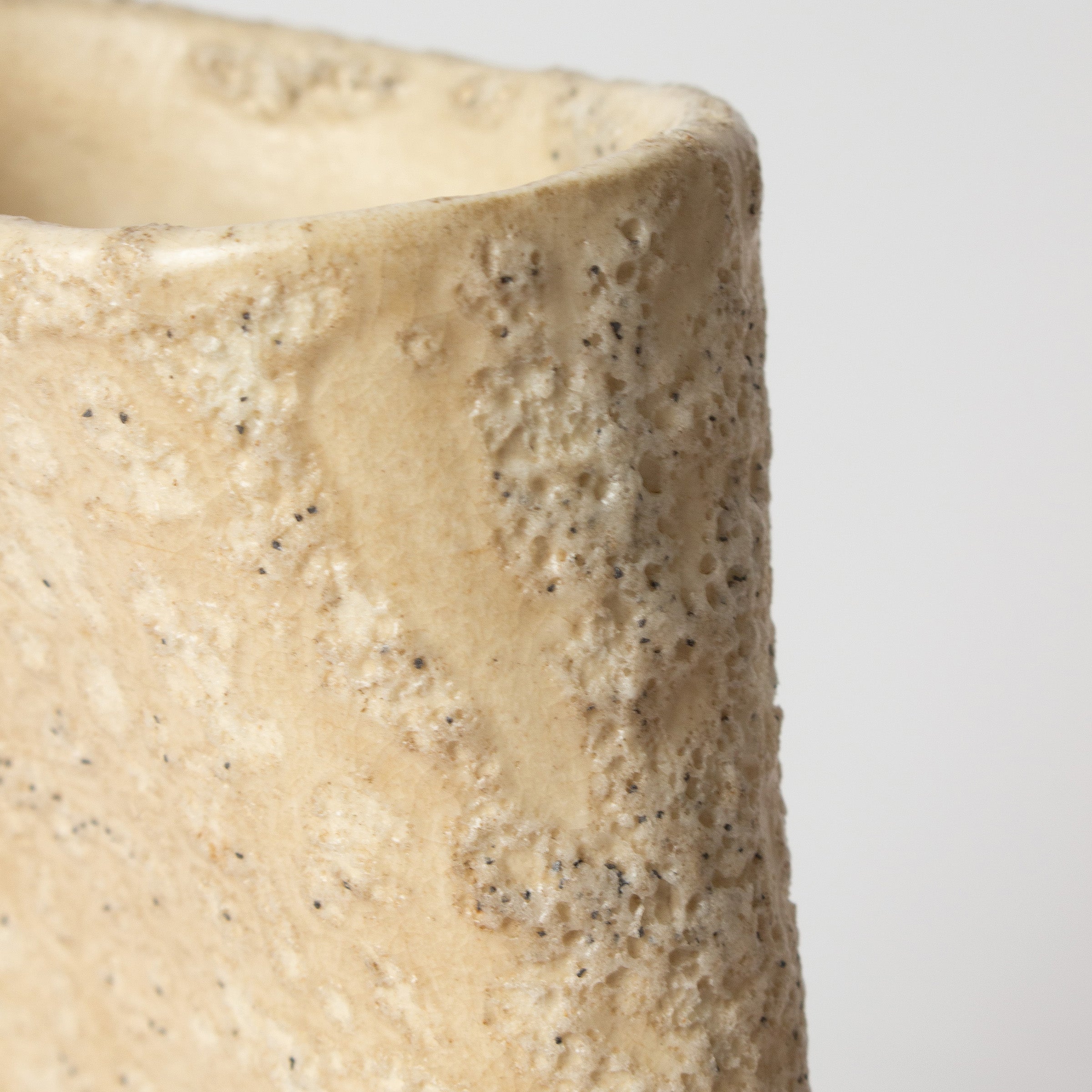



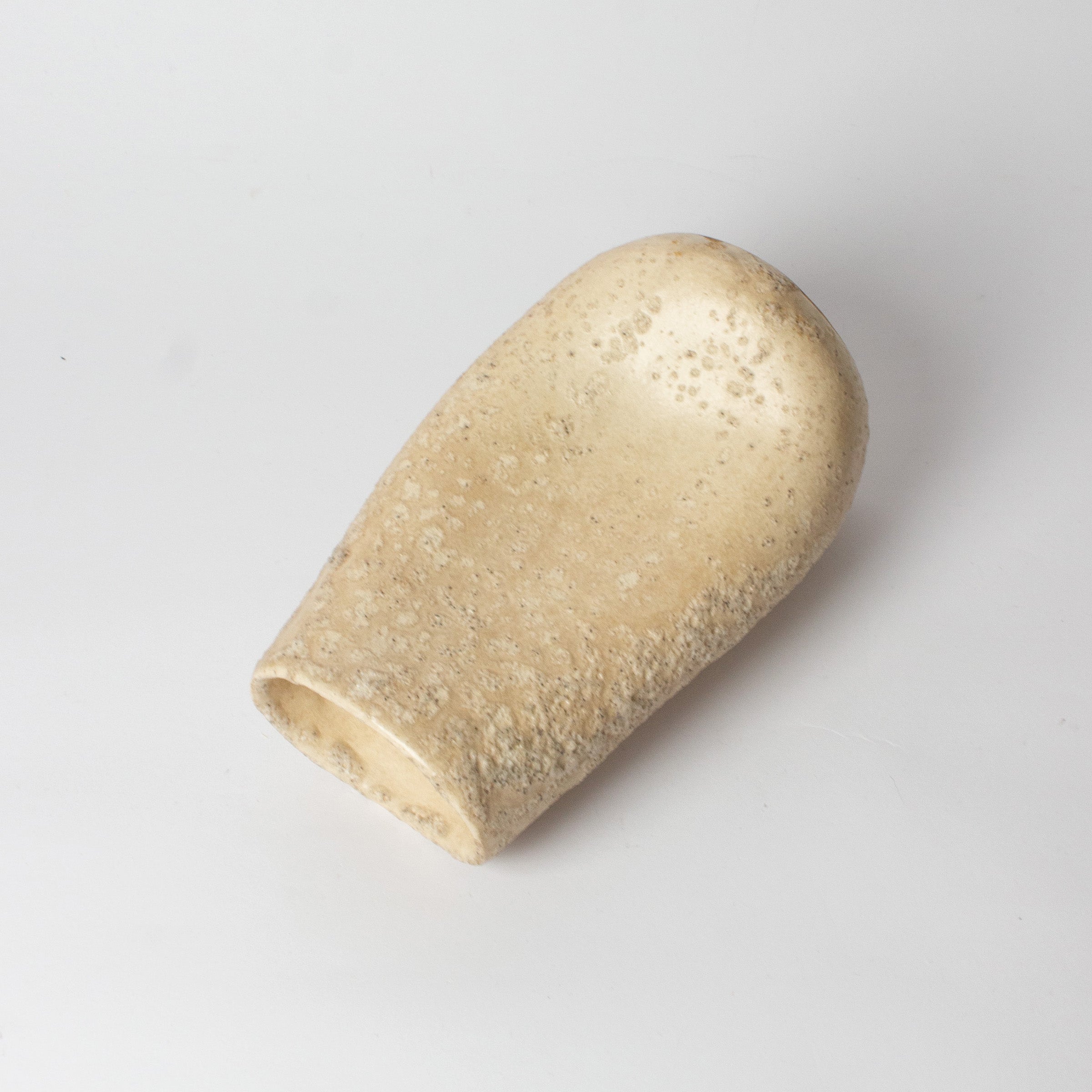
Ceramic vase from the Shiroi Hensubō series by Yagi Kazuo
This light-colored ceramic vase, handcrafted by Japanese ceramicist Yagi Kazuo, belongs to a series known as shiroi hensubō . Its irregular shape, narrower on some sides and wider on others, presents strikingly contrasting profiles depending on the viewing angle. The entire piece was hand-modeled without the use of a potter's wheel, following an asymmetrical approach characteristic of this series. The light-colored clay contains fine, dark inclusions visible on the surface. Left unglazed, the surface displays a pronounced grain and granular texture, which catch the light unevenly. The overall effect expresses a direct relationship between gesture, material, and form.
This piece belongs to a series known as shiroi hensubō, an expression that could be translated as "deformed white vase," which Yagi Kazuo developed in the 1970s based on research into raw materials and organic forms. The hand-modeling, without the use of a potter's wheel, accentuates the sculptural aspect of the object, which seeks neither symmetry nor uniformity. The interior is smoothed, while the exterior appears to have been deliberately left irregular, revealing the roughness of the bare clay.
Kazuo Yagi (1918–1979) is one of the leading figures in contemporary Japanese ceramics. Founder in 1948 of the Sōdeisha movement alongside Junkichi Kumakura and Hikaru Yamada, he marked a decisive break with the functional tradition of ceramic arts in Japan. From his earliest works, he rejected the conventions of wheel throwing, refused utilitarianism, and sought to give ceramics an autonomous status within the field of modern art. His pieces, often abstract, borrow novel forms from the plant, mineral, or anatomical worlds, oscillating between sculpture and intimate architecture. Represented in major museums in Japan and abroad, his works are part of the collections of the Kyoto National Museum of Modern Art, the Tokyo National Museum of Modern Art, the Metropolitan Museum of Art in New York, the Victoria & Albert Museum in London, and the Musée National de Céramique in Sèvres. He is considered one of the pioneers of avant-garde ceramics in the 20th century. The Sōdeisha movement, which he founded and of which he remains the most influential figure, profoundly renewed the perception of ceramics, affirming freedom of form and experimentation with materials. A detailed article on our website traces the aesthetic stakes of this essential movement; you can find it via this link .
This vase, which dates from the 1970s, is signed (engraved) under its base. It is presented in its signed (tomobako) wooden box, calligraphed with the name of the series (shiroi hensubō -白い扁壷) and the artist, accompanied by his red seal (the box shows some signs of wear).
| PLACE OF MANUFACTURE | JAPAN |
| DIMENSIONS | Height 18 cm - Width 12 cm - Depth 10 cm |
|
WEIGHT |
1.1kg (vase + box) |
| MATERIALS | Ceramic |
KNOW-HOW
Japanese ceramics, born more than 10,000 years ago, are a dialogue between earth and fire, a quest for harmony through imperfection.
With a wide variety of high-quality raw materials, such as rich clays and natural glazes, each region has developed its own techniques, reflecting the identity of its terroir.
Hand-crafted, these vases, made using the most precious Japanese ceramic techniques, bear the imprint of a master craftsman who is the heir to a thousand-year-old tradition. This living art embodies the essence of Japan, where history and nature unite in beauty.
Although deeply rooted in tradition, these exceptional Japanese ceramic vases, signed by very big names, have a resolutely contemporary spirit while preserving their authenticity, incredibly decorative and wonderfully timeless sculptural pieces.
DELIVERY
Delivery
Free delivery in mainland France for purchases over €200. Orders are generally dispatched within 2 working days, except in special cases, as indicated in the banner at the top of the website.
Precious items are wrapped in beautiful fabric, beautifully knotted according to the precious Korean art of pojagi. Some exceptions apply, especially if the items are large. Learn more >
Detailed delivery information is available via this link >
Your invoice will be sent by email
Payment methods
By card (Stripe operator): Visa, MasterCard, Discover, American Express.
Secure card payment with 3D Secure.
By PayPal, Apple Pay, Google Pay and Shop Pay
Returns and exchanges
14 days to change your mind.
CARE INSTRUCTIONS
Handle with care. Rub gently with a soft cloth. Do not place near a heat source.
Choose options
















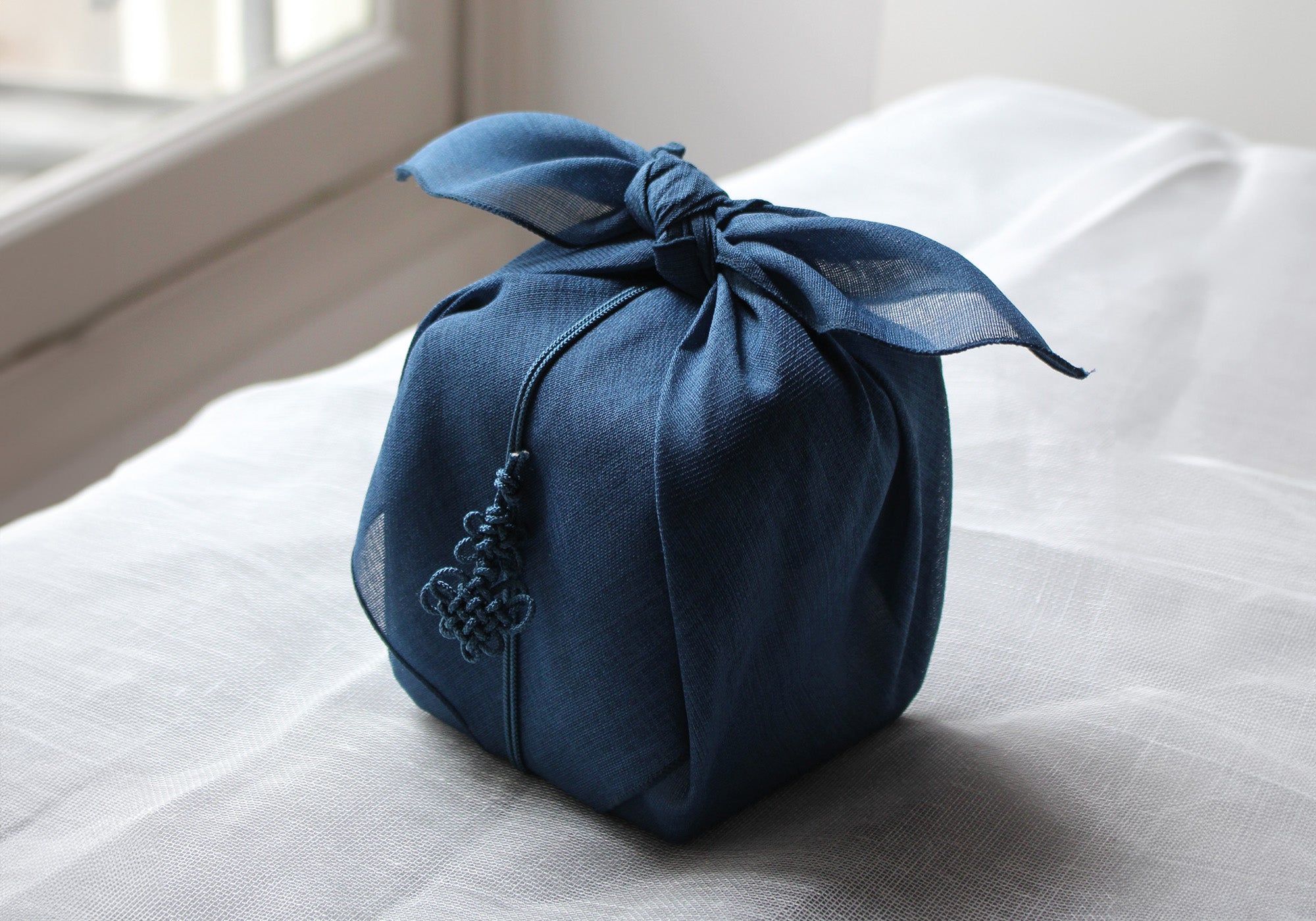
The art of wrapping
The exceptional items are wrapped in a beautiful fabric beautifully knotted using the little-known art of Korean pojagi and decorated with a delightful maedup (Korean ornamental knot). Details and conditions >





